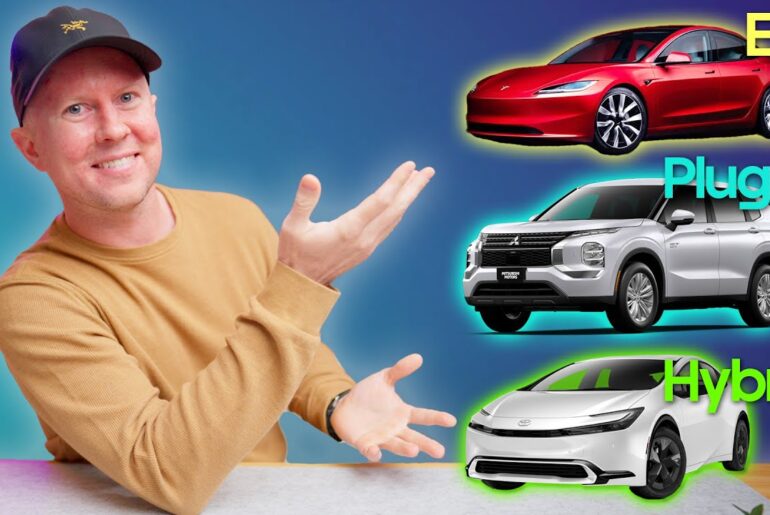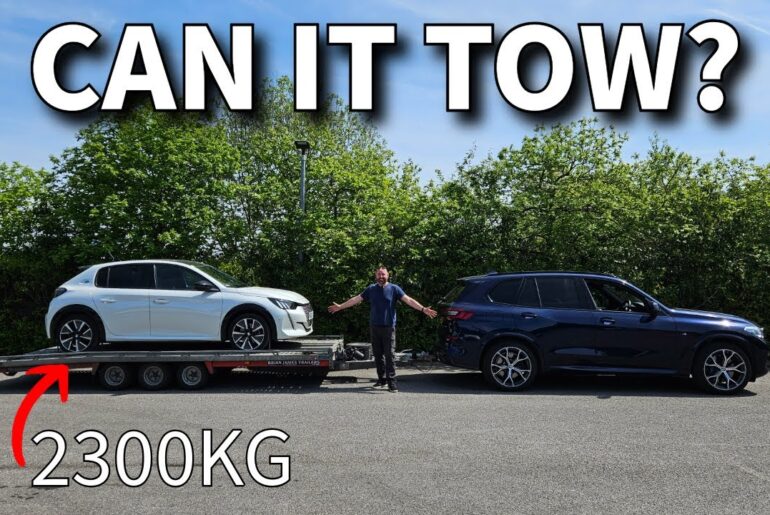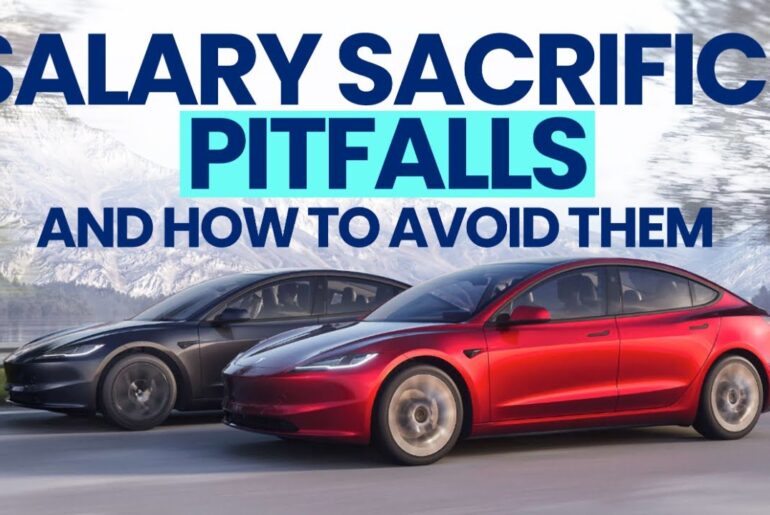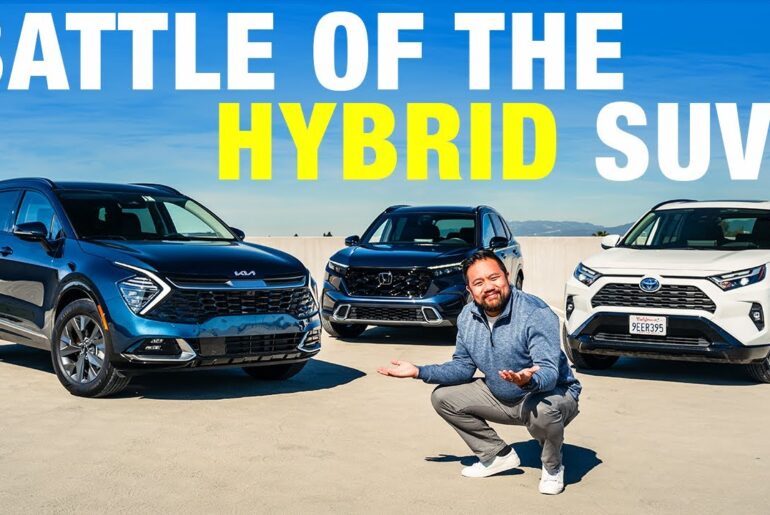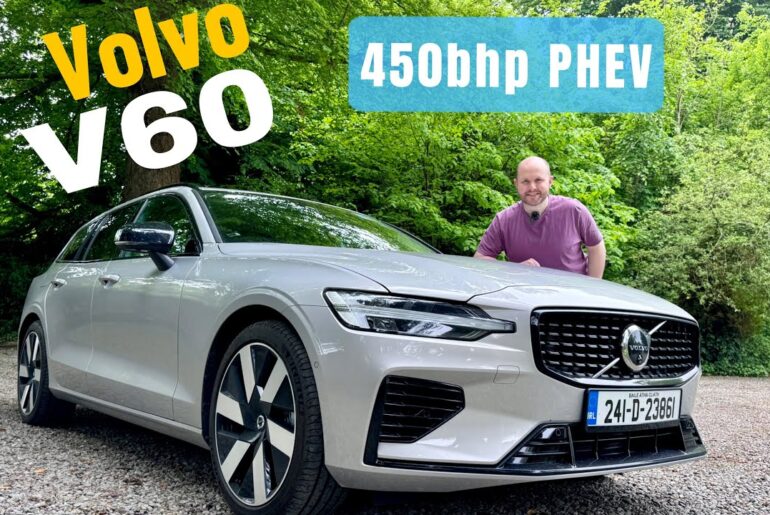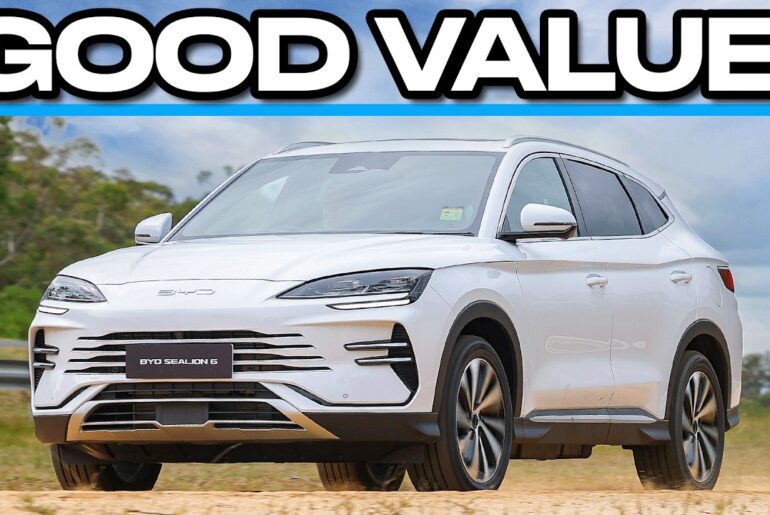Why Hybrids Are Beating EVs In The U.S.
When it came to the US at the turn of the millennium, the hybrid car was considered a revolutionary step toward a less polluted future. It wasn’t exactly exotic or luxe, but Hollywood celebrities loved its green image, while ordinary, cash strapped consumers adored its exceptional fuel economy.
At a time when gasoline prices were on their way to record highs. But since then, EVs have stolen the spotlight for all electric with electric. Vehicles, the. Tesla model Y becoming the best selling vehicle in California. While EVs stole the show, the company, once lauded for bringing hybrids to the mainstream, received
Extensive criticism from environmental groups for being slow to adopt EVs and for lobbying against tougher climate legislation. But EV sales have slowed in the US, going from selling in just 25 days at the beginning of 2023 to 72 days just over a year later. Meanwhile, hybrids are flying off lots faster
Than even plain internal combustion cars and winning awards. Hybrid sales grew five times faster than EVs in February 2024. Automakers are finally reading the room. They’re realizing that they still have to sell cars right now, not in the future. And that’s this is what people want to buy.
Automakers, including some that had made bold commitments to go all electric, are now pulling back on EV manufacturing in favor of them. But hybrids aren’t as effective as EVs at reducing greenhouse gases. Defenders say they are a solid, short term solution. Automakers, including some that had
Made bold commitments to go all electric, are now pulling back on EV manufacturing in favor of hybrids. Ev sales in the US had a banner year. In 2023, a record 1.2 million units were sold. Their market share is growing, and yet the oft reported slowdown is real.
Data shows sales growth is leveling off. One of the reasons legacy manufacturers are seeing an EV sales slowdown has been Tesla’s aggressive price cuts throughout 2023, but legacy automakers are still selling lots of hybrids, especially standard ones without a plug. You get a hybrid off of the truck at a dealership.
A lot of times that vehicle is already already has a customer, so it’s not even a point of if it actually having to sell. Comparing January 2023 and February 2024 data show that hybrids continue to sell much better than both internal combustion vehicles and EVs.
Look no further than the company that brought the hybrid to the mainstream more than two decades ago. Toyota Pro EV and environmental groups say the world’s largest automaker has been lobbying to slow the EV revolution it missed out on, though it has experimented with battery electric vehicles before.
The company has long argued that the bridge to full electrification will be a long one, and that most consumers aren’t ready for fully electric vehicles. That said, it did in 2021 unveil plans to release 30 EV models by 2030, with an annual sales target of 3.5 million.
In January 2023, Toyota faced its first shareholder proposal in two decades. Investors insisted the company do more to combat climate change and challenged the reappointment of chairman and CEO Akio Toyoda. The proposal was defeated and Toyota kept his board seat, but he did step down from his role as CEO
As of early 2024. Toyota has only two EVs, and neither sell in large volumes, but in 2023, sales of its hybrids and plug ins increased nearly 28% over the previous year. They make up about 30% of the Japanese Behemoth’s portfolio. Nothing has really changed within the Toyota
Framework of product planning, and explain why we have continued to say this very, very succinctly. A year ago we were being mocked for it. Today we were being congratulated for it. We’re not swayed by either one. Toyota’s American rival and sometimes partner Ford, has been selling EVs for longer and in larger volumes.
Sales of its acclaimed Mustang Mach E and the F-150 lightning climbed nearly 18% in 2023 compared to the previous year. Hybrids still outpaced that jumping by more than a quarter. Ford CEO Jim Farley said the automaker would postpone about $12 billion in planned EV investment and pull back on production of the
Electric F-150 pickup in favor of a hybrid version. Success is a part of why everyone else maybe wants to jump back in, because they’re seeing these brands have success with these vehicles seeing so much demand. And not only are they selling fast, they’re selling at MSRP in many cases.
While Toyota may have pioneered the mainstream hybrid, General Motors brought the plug in hybrid to America in the form of the now discontinued Chevrolet Volt. From an EV perspective, we also see this is our year to really execute and see growth there. So it’s it’s a strong performance in 23.
I’m really proud of the team. But in early 2024, the company said it will reintroduce plug in hybrids to its North American lineup. If you look at their core buyer base, a lot of these people infrastructure is not built out in places where they are living.
If they have folks that are coming back to dealerships with their old General Motors brand vehicles, it’s going to be a much easier sell to get these people into hybrids than it is to get them into EVs. Automakers are under great pressure to meet continually tightening federal fuel economy
Standards. A single company’s fleet has to hit an average target of 58 miles per gallon by 2032. That is 18% higher than the current rule of 49 miles by 2026. The EPA also issued standards in March 2024 that call for 35 to 56% of cars to be full EVs by
2032, with US household costs rising across the board and gasoline prices at three and a half dollars per gallon on average. Hybrid vehicles offer a sweet spot for many. Ice. Vehicles are losing market share, but EV sales are flattening. The market is running out of early adopters, and many say these vehicles aren’t
Ready for the mainstream. Basically, in the last ten years, we’ve gone from 0% of the industry to 8%. So we’re about a ten year period of time. The government’s regulations to say, okay, we’ve gone from 0 to 8% in ten years, but now in the next eight years, we’re going to grow by
60%, not grow by 60%. We’re going to take that number from 8% to 67%. People are saying, wait, I don’t know who’s all going to buy those right now. As we move towards mass market, those folks are a lot harder to sell to. They’re a lot more price
Conscious, a lot more product conscious. They have a lot more questions in general. Um, and I think that’s going to really plague the EV adoption rate for, for quite some time. And that was always going to be the case. On average, EVs were the most expensive powertrain you could buy in early 2024.
Plug in hybrids were almost as pricey. Standard hybrids were cheaper than everything, including Ice vehicles. I think right now in this country we are in an affordability crisis amongst many industries. But I think auto is being a big one because if we look at how people have afforded vehicles in the
Past, it’s been because of low interest rates. And now that is not the case. The average interest rate on a new vehicle loan is over 7% used. It’s over 11%. So when we look at what we can afford, it probably is less than what we afforded in the past.
It’s a tough pill to swallow to say I can buy a Ice vehicle. Or even a hybrid vehicle at, let’s say, $700 a month and a Bev at 9 or 1000. That’s that’s a significant bump. Evs have strong selling points. They are simpler and cheaper to maintain, and
The cost of charging is a lot less than refueling in parts of the country where gas prices are higher. But there are stubborn obstacles, still relatively long charging times, and a lack of public charging infrastructure. But a lot of folks say, I just don’t want the hassle
Of owning an EV. Like my life is already complicated enough. I don’t need to go learn a whole new system of doing things to just drive and go places that I want to go. It’s easy to put on a piece of paper.
Hey, I spent X amount of gas, I’m going to spend X amount of electricity. Great. I’m going to be ahead of the game in 18 months in terms of cost, but a convenience factor is priceless. It’s an idea that I might run my family four states away for a vacation once a year.
I don’t want to take three days to get there. That convenience factor might completely take that consumer 100% out of the Bev market, and it can’t be quantified. 83% of EV charging occurs at home, but J.D. power data shows that 1 in 3 car shoppers don’t
Have a home charger, nor the ability to install one. The firm runs a mix of studies on electric vehicles, including a year round public charging survey of 30,000 consumers in all 50 states and D.C.. The most common reason people decide not to buy an EV is the lack of public charging.
Ev owners say public charging issues are the least satisfying aspect of the ownership experience. Nearly 20% of the time, drivers visit a public charger, they aren’t able to charge. Most of the time, that is because chargers are failing or malfunctioning, but the number of times a station is unavailable or the wait
Is too long has doubled from 10% to 20% of failures in just two years. While EV adoption has hit some speed bumps, no one expects demand to fall or even remain flat forever. Globally, EV production is expected to double from 13,000,000 in 20 24 to 30 5,000,000 in 2031, while
Hybrids are only expected to climb from 13 to 15 million in the US, EVs will see staggering growth in the coming decade. We’re still very bullish on electric vehicles and where the market is going to go. You look at the investments that have been made in vehicle electrification by the
Manufacturers. I think that speaks loudly in terms of where the manufacturers think the market is going to go, an important distinction. Standard hybrids are really just more efficient gas cars, supplemented with a battery and electric motor that extends the vehicle’s fuel economy. This is what the original Prius was and
What many hybrids are today. Plug in hybrids have a charging port, battery and at least one electric motor. Some of them can, in theory, be run without gasoline at all. Like an EV, the engine acts as a range extender, in others the engine and electric. Motor work. Together.
With a plug in hybrid or a hybrid, you know, you get to largely avoid that public charging scenario. You’re eliminating what is the worst aspect of owning an electric vehicle? There has been a slight increase in the number of models available compared with standard hybrids since 2019.
Still, though, they are the smallest category of cars in terms of market share, and they aren’t especially cheap. On average, they cost nearly as much as an EV. They also don’t offer a lot of the benefits of a full EV. You still have to get oil changes and
Maintain the internal combustion powertrain, and you have to buy gas when driven on battery power alone. Plug in hybrids have just a fraction of the range found on a full EV. In essence, what you’re doing is you’re taking two different product technologies combining into one. But it’s it’s not serving either
Category all that well. In other words, it might be the worst of both worlds, but it does provide the convenience of being able to rely on electric power for daily driving, but having the gas as backup when needed. The EPA electric range on the Prius Prime plug in is 44 miles.
The average American drives about 37 miles. That’s why you’re seeing in the news from a lot of the competitors. You are seeing everyone starting to discuss it, but they’re not discussing it as a bridge strategy. You’re hearing them saying is, this is maybe the best valued strategy.
I want to make sure we’re clear. You’re seeing a lot of of momentum around plug in because of what has been learned about the rejection of EV. Another issue with plug in hybrids is that they can be driven entirely on gasoline. A 2022 study from the International Council on
Clean Transportation, a group that studies alternative powertrains, found that plug ins might be driving on electric mode 26% to 56% less than one might assume from EPA labeling, and real world fuel consumption may be 42% to 67% higher. The study did note that at the time, the sample
Size was small and more data were needed. Plug in hybrids are great if you plug them in. As we talked about, not everyone plugged them in. So so the theoretical efficiency is higher than the practical one. J.d. power has found that plug in hybrid owners are charging their vehicles pretty consistently about
Five times a week on average, and they’re using that electric range about 70% of it per day. Despite concerns some believe they may be the best available option for moving the needle closer to EVs. You have to convince a consumer that a plug is
Not a disruptor to their life, and the way you do it is you introduce it to them in a little piece, not an all you can eat concept. Gil Towle, a professor at UC Davis, sees it somewhat differently. Plug ins were originally conceived as a bridge technology, a temporary compromise that
Would obsolesce as EVs improved. While they certainly can serve that purpose, they may stick around a lot longer, at least for that last 20 or 30% of the market that is unable to make the full leap to battery technology. California, which plans to ban the sale of
Internal combustion engines by 2035, is still allowing 20% of all new cars sold after that point to be plug in hybrids. For a very short while, we were all thinking that a full electric Bev battery electric vehicle are going to get us to 100% or the full transition.
I think we are learning to appreciate that it’s going to be hard. So as long as we are thinking about 20% of the sales, 30% of the sales, we can go with full electric. But when we need to go to 50, 60, 70, closer to 80, it’s starting to be really
Hard. And and then plug in hybrids starting to make sense.
When Japanese automaker Toyota first brought hybrids to the U.S. in the early 2000s, they were at the cutting edge of green transportation. But soon after, EVs stole the spotlight. Elon Musk-led Tesla disrupted the auto industry and nearly every major legacy automaker scrambled to take part in the coming EV revolution. With almost no fully electric vehicles, the once vanguard Toyota looked behind the times. However, as of early 2024, EV sales are leveling off and hybrids are making a comeback. Automakers such as Ford, BMW, Mercedes, Hyundai and General Motors are all either pulling back on EV production or boosting the manufacture of the humble hybrid. The vast majority of hybrids are standard ones – with an engine and backup battery. But plug-in hybrids are a growing category. Automakers such as GM are reintroducing them to North America.
Chapters:
00:00 – 01:55 Intro
01:56 – 05:42 The hybrid surge
05:43 – 09:36 EV troubles
09:37 – 14:46 What’s next
Producer: Robert Ferris
Editor: Darren Geeter
Animation: Jason Reginato
Senior Managing Producer: Tala Hadavi
Additional footage: Getty Images, Toyota, Tesla, Ford, Volvo, Hyundai
» Subscribe to CNBC: https://cnb.cx/SubscribeCNBC
» Subscribe to CNBC TV: https://cnb.cx/SubscribeCNBCtelevision
About CNBC: From ‘Wall Street’ to ‘Main Street’ to award winning original documentaries and Reality TV series, CNBC has you covered. Experience special sneak peeks of your favorite shows, exclusive video and more.
Want to make extra money outside of your day job? Take CNBC’s new online course How to Earn Passive Income Online to learn about common passive income streams. Register today and save 50% with discount code EARLYBIRD: https://cnb.cx/3Iwblnk
Connect with CNBC News Online
Get the latest news: https://www.cnbc.com/
Follow CNBC on LinkedIn: https://cnb.cx/LinkedInCNBC
Follow CNBC News on Instagram: https://cnb.cx/InstagramCNBC
Follow CNBC News on Facebook: https://cnb.cx/LikeCNBC
Follow CNBC on Threads: https://cnb.cx/threads
Follow CNBC News on X: https://cnb.cx/FollowCNBC
#CNBC
Why Hybrids Are Beating EVs In The U.S.

